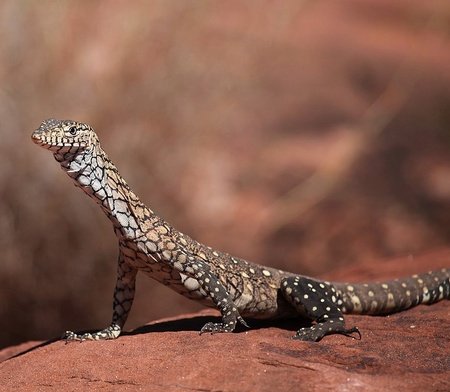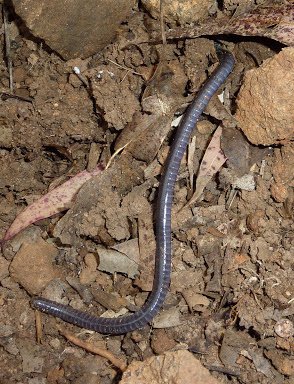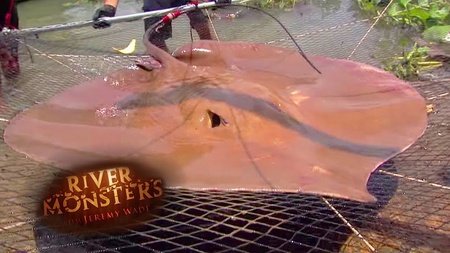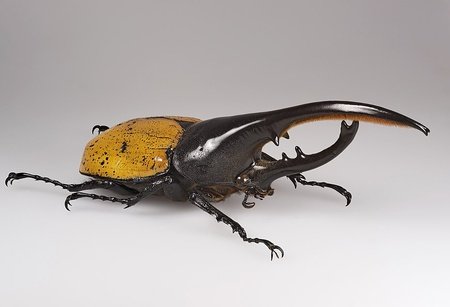
Animals of the Week #3
First published: Sunday July 25th, 2021
Report this blog
Some More Information
The idea of this series is that each week, I will post a blog that educates you about six different animals, one mammal, bird, reptile, amphibian, fish, and invertebrate. This is inspired by my fascination with the zoological world, so I hope to bring the wonders of animals to you. This is the third edition, and I do hope you enjoy it. Let's get started!
Mammal: Northern Elephant Seal
Although it is quite evident, northern elephant seals received their name through their unique noses reminiscent of an elephant's trunk. Males begin to develop this large nose, known as a proboscis, when fully mature, at an age of three to five years old, but the development of the proboscis finishes at an age of seven to nine. Adult males grow to over 13 feet (4 meters) in length and up to 4,500 pounds (2041 kg), while females are much smaller, at 10 feet long (3 meters) and 1,3000 pounds (589.5 kg). These peculiar pinnipeds are second in size only to their southern counterparts, and have ear holes, as well as short front flippers that enable movement on land via galumphing, flopping on their stomachs. Their range stretches from the Mexican Baja California peninsula to Alaska's coast, gulf, and Aleutian Islands. The comeback story of this species is inspiring - they were hunted to near-extinction after a scarcity of whales, due to their coveted blubber used for lamp oil, until it was estimated that, in 1910, there were less than 100 northern elephant seals, all confined to Guadalupe Island off the coast of Baja California. Now, elephant seals have rallied, reaching their population size before hunting, with an estimated 150,000 total individuals, most in Californian waters.

Bird: Lear's Macaw

MG17 requested a macaw or toucan for this section, and to honor Brazil, the featured bird of this blog is the Lear's macaw. Found in the arid caatinga, a thorn-scrub forest habitat, the Lear's macaw has an interesting etymology. It is named after a young British poet who specialized in limericks and nonsense poetry, Edward Lear, who portrayed it in a critically successful book, but the bird remained mysterious. In 1978, live specimens were located by German ornithologist Helmut Sick, in Bahia, Brazil, and were given official status as a species and named after Lear. The Lear's macaws are part of an ornithological South American group known as "blue macaws", for obvious reasons, including the Spix's macaw, which is extinct in the wild and has only around 150 captive individuals (also the species featured in the Rio film series), glaucous macaw, thought to be extinct, and the hyacinth macaw, the largest and most common in the group. Communicating through unmelodious screeches and croaks, these macaws have a diet consisting mainly of nuts from the Licurí palm, and because these trees are routinely cut down or burned, limiting their distribution to chiefly the Canubos Biological Station, with efforts being made to fuel a comeback. In spite of the scarcity of the species' preferred palm tree and the illegal bird trade, the Lear's macaw is slowly defying extinction, thanks in large part to the American Bird Conservancy.
Reptile: Perentie

The Perentie is the largest of Australia's lizards and the fourth-largest lizard in the world, a species of monitor lizard. The diet of these carnivorous reptilians is complex, and Perenties eat anything from insects and birds to smaller reptiles and turtle eggs to even small mammals and marsupials. Tracking prey via sight and sensing it with their tongues, Perenties use a gruesome technique to ensure the demise of their prey, brutally shaking it until dead and then swallowing it whole. As for its appearance, the natural coloration of its body is a rich brown hue, with cream or yellow markings. A forked tongue, several razor-sharp curved teeth, five clawed toes on its feet, and a thunderously powerful tail also help the Perentie subdue their victims.
When threatened, these feral monitors rise up with a swelling throat and a vicious hiss; if this fails to intimidate predators (usually dingos or humans) away from them, their last resort is to retreat. Perenties are also intriguing particularly due to recent research, which suggests they could have the evolutionary remnants of a venom gland, possibly providing explanations for why Perentie bites take such an extensive amount of time to heal. As of now, this reptile species is of Least Concern, according to the IUCN (International Union for Conservation of Nature), and hopefully it stays that way.
Amphibian: Sagalla Caecilian
Sagalla caecilians are part of a bizarre, atypical group of legless amphibians that at first resemble earthworms, but are far from that. The endangered amphibian is confined solely to Sagalla Hill in Kenya, with a range that is equal to only the size of about half of Manhattan Island. They make their homes in soil underneath banana plants or decaying organic debris. Sagalla caecilians tolerate small-scale farming and are generally found more often near streams and water sources than in cultivated land away from streams. While there is not a great many things known about this interesting creature, efforts are consistently being made to protect and preserve the caecilians of southeastern Kenya, from the several threats in their natural environment. The plethora of hazards to Sagalla caecilians include habitat change, droughts, invasive species, urbanization, extreme weather and temperatures, disease, logging, agriculture, and ecological change. The race is still going on to ensure the survival and endurance of one of the most peculiar amphibians on Earth.

Fish: Giant Freshwater Stingray
The giant freshwater stingray is elusive, its zoological profile clouded in mystery ... no one can be sure how many are left, what habitat they prefer, or if they ever journey to the ocean. The humongous ray potentially is the largest freshwater fish in the world, at a length of 16.5 feet (roughly 5 meters) including their barbed tail, but there is so much enigma surrounding this creature that it is impossible to be sure. They reportedly can weigh up to 1,300 pounds (589.6 kg), weighing the enormous creatures is exceptionally difficult. These stingrays also have a complex but interesting history, first identified in 1852 by the Dutch ichthyologist (fish biologist) Pieter Bleeker, in Indonesia, but after that, they were basically forgotten for more than a century, until as late as 1990, when they were first classified by scientists as a new species. The species is known to inhabit river systems in Southeast Asian nations - Cambodia, Thailand, Indonesia, and Malaysia. As a result of the increasingly lower quality of freshwater habitats, giant freshwater stingrays are now considered endangered, and it has been possibly indicated of major reductions in population. Thailand's Mae Klong River, in particular, has discharged a plethora of waste containing cyanide, courtesy of an ethanol plant, which is responsible for the deaths of at least 70 stingrays, decreasing the population in this environment to merely a few large stingrays. Because the stingrays typically dwell at the very bottom of these rivers, it will remain mysterious and evasive of more studies to be undertaken ... we will have to wait until more information is uncovered of this riveting animal.

Invertebrate: Hercules Beetle
The Hercules beetle is species of dynastine scarab beetle, or rhinoceros beetle, from Central and South America. Their distribution is widespread from southern Mexico to Bolivia to the Lesser Antilles islands in the Caribbean. Sizes of adults vary from 1.9 inches (50 mm) to 3.3 inches (85 mm) in length and 1.1 inches (29 mm) to 1.6 inches (42 mm) in width. Oddly enough, males' coloration changes depending on the humidity, with higher humidity levels causing the elytra, or outer covering, to turn black. Males, as shown in the picture, are equipped with distinctive thoracic and cephalic horns (horns on their thorax and head), which, along with their remarkable body size and alternating coloration, easily distinguished Hercules beetles from other members of their genus.

Hercules beetles, in terms of their life cycle, undergo complete metamorphosis, though not much is known about the natural life cycle and reproductive cycle of this species, despite various studies conducted by scientists and breeders in laboratory conditions. Eggs are incubated on average for 27.7 days, the pupal stage, in which the beetles are confined to cocoons, lasts roughly 32 days, while adults can live from 3-6 months in captivity. All in all, complete metamorphic development lasts 19-21 months, and the lifespan of this insect can reach up to two years. Hercules beetle larvae are saproxylophagous, meaning they feed on dead wood, and they develop in rotten and decomposing logs and tree trunks. There is a whole lot more about this striking beetle, but the amount of information about it is complex and too lengthy to fit into this blog.

• The Indian Great Squirrel is a large and colorful squirrel from central and South India.
• The Indus and Ganges river dolphins are found in those rivers in India and neighboring countries, and they are endangered. They are the National Aquatic Animal of India and National Mammal of Pakistan.
I haven't read any of the earlier ones so I don't know if you've already covered these, but again, great blog!
And the only reason I've heard of Lear's macaws is because of MG17. Anyway, maybe if I make some other zoological blogs I will include the Indian animals you suggested (river dolphins in particular.) And feel free to read the other two blogs in the series!I've seen so many different macaw species that none surprise meWdym?And I've watched the movies, hopefully Spix's macaws will rebound just like elephant seals (and hopefully Lear's macaws and Sagalla caecilians in the near future)
Can I expand the list of suggestions of Indian animals given by TheNatureThread?
Mammal: Bengal tiger or Asiatic lion.
Reptile: King cobra.
Bird: Indian peacock or the Great Indian hornbill.
Thanks. Enjoy your summer vacation!
This was another interesting one, and really helps, too!
(i really just wish i could snap my fingers and then everything humans have ruined would come back, ya'know that feeling? Maybe to the early Permian or the Tertiary.)
I've got lots of suggestions, but I want you to hear from the others!